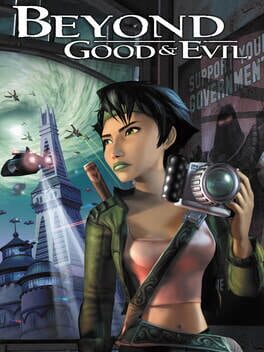Beyond Good & Evil is a fantastic title. I’m not even trying to say that the actual game is amazing, but that the title itself is just wonderfully evocative. It pairs beautifully with the box art of the hero standing not with a gun, but with her camera, ready to capture the horrible truths at the foundation of a futuristic city. It lets your imagination run wild with the possibilities of what you may discover, and that’s exactly what bit me when I started playing. This game is hardly like what the box promises, striking a tone that’s more comedic and fantastical than it is mysterious. You spend a lot of time with quipping sidekicks, doing basic platforming and hitting fantasy monsters with a staff instead of uncovering dark truths. The stealth and photography that seemed like the main selling point are only a small portion of the game, coming to a total of about five pictures required over the course of the entire playthrough. It’s not that this difference from what was advertised makes the game bad, but it’s essentially a different form of the “is it a good sequel” problem. If a game sells itself in a way not reflective of the actual product, can people be blamed for being disappointed in spite of the game’s merits? If I played this game in a total contextual vacuum, I would simply pass it off as a mediocre fantasy platformer with a couple interesting ideas, but the product being so different from the more interesting version that was advertised cast a pall over my enjoyment. I kept waiting and waiting for the Beyond Good & Evil I had in my head, but it just never ended up happening. With how development of the sequel has been going, I’m starting to think that will be the main thing these games have in common.
